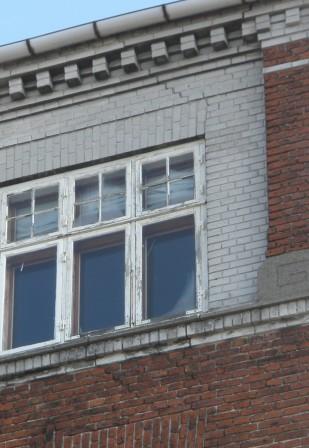
Cornice repair
Building types 1 and 2: 1850-1920
Cornices can become damaged in a number of ways and for a number of reasons. The most common causes of damage are: water penetrating leaks in the roof covering near the roof base over an extended period of time (e.g. due to frost bursts); subsidence damage due to weaknesses in the way the building was originally constructed; or external factors such as excavations.
If the cornice is reasonably sound and intact, and the repair primarily concerns the reinforcement and re-grouting of cracked joints, normal current practice is to install rustproof round bars in every third course up to ca. 0.5 m on each side of the damage site (crack). The round bars are inserted into raked joints at a depth of ca. 5-6 cm. Pointing is then carried out, firstly with cement mortar and finally with cement-lime mortar, in a strength and mix appropriate to the surrounding brickwork.
If the cornice is damaged (or becomes so as a result of e.g. extensive damage in the nearby roof frame) to an extent that requires rebuilding, it is considered favourable to re-use bricks that are appropriate in size to the course and bond pattern in question. However, if the cornice needs to be rebuilt using new bricks, it may be necessary to pinch the joints, especially the horizontal ones. This is because brick sizes have changed over time.
When cornices are rebuilt, it is important for the brickwork to be reconstructed in a way that prevents its structural deterioration, e.g. not omitting sections of the cornice’s counterweight. Otherwise, this could lead to the cornice tilting and toppling down.
Further information is available from BYG-ERFA, etc.: Masonry structures
Photo: sbs/Silas Steenholdt